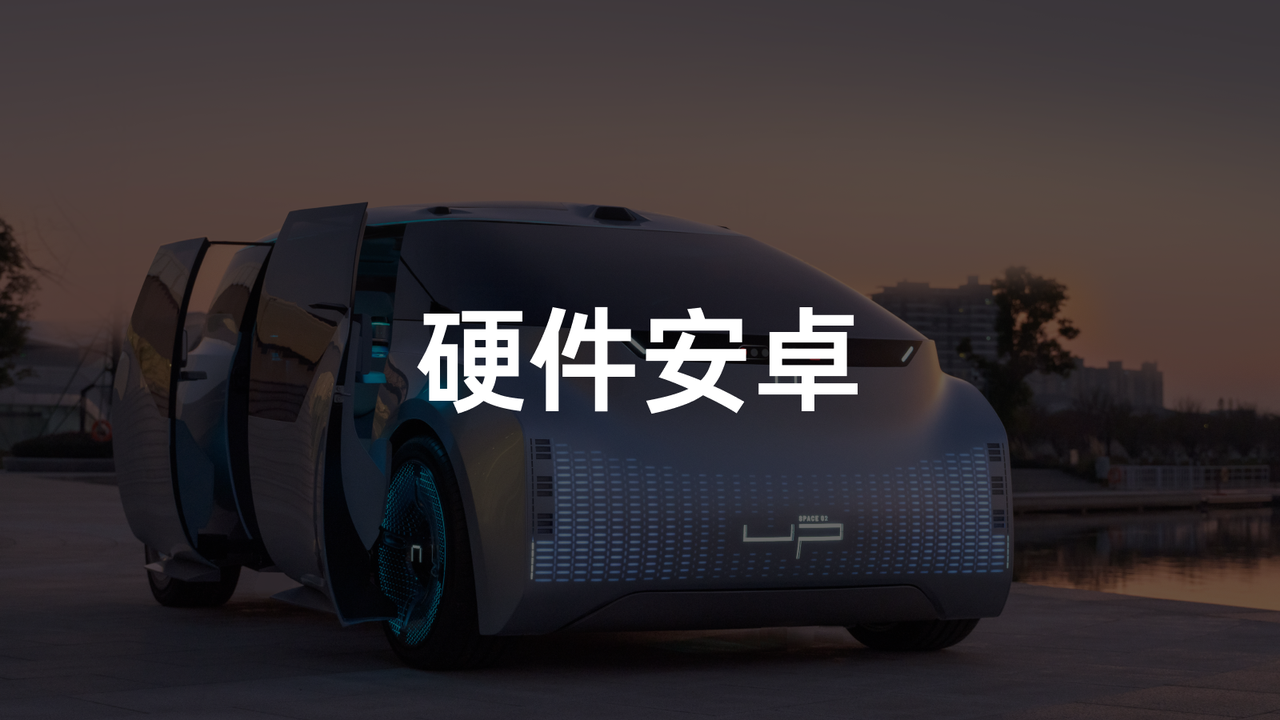The content of this article is sourced from 42how and has been translated by ChatGPT
On January 10, the day before the Youpao Technology Experience Day, I was invited to participate in the small-scale media communication meeting of Youpao. Then on the morning of January 11, we also participated in an exclusive interview with Li Peng, founder/CEO of Youpao Technology. At the end of December, we also had an in-depth conversation with Li Peng.
All of this is due to the concept of “skateboard platform” that has been popular since the second half of 2021.
What is a skateboard platform?
Skateboard platform is the direct translation of Skateboard Platform, which can also be read as skateboard platform. However, in the Chinese context, it is more often read as chassis. But what exactly is a skateboard platform, there is currently no clear and authoritative definition.
Rivian, which is considered a Tesla killer, saw its stock price soar after going public in the US and attracted global attention. In addition to its unique business model, the skateboard platform also began to gain popularity. Based on the skateboard platform, Rivian developed the R1 series of passenger cars for the consumer market, as well as the Prime Van, a customized cargo van for Amazon. Because their skateboard platform has a beam, for a period of time, the non-bearing body was the orthodox symbol in the judgment standard of skateboard platform.
On the other hand, the main publicity point of the new force in the United States, Canoo, is their proud skateboard platform. On their official website, the description of the skateboard platform is more detailed than Rivian’s. They did not mention the non-bearing body, but focused on the high-performance power, wire-controlled steering, and high integration of these features.
On Canoo’s skateboard platform, we can clearly see that Canoo’s imagination is stronger than Rivian’s. There are already three completely different products that have been unveiled: Lifestyle Vehicle, box truck MPDV, and pickup truck, as well as a high-performance coupe that has not yet been officially unveiled.
In fact, besides these well-known companies promoting the advantages of the skateboard platform, players in this concept also include Israel’s REE Automotive and China’s PIX.Until now, my understanding of the skateboard platform is that it must have a higher level of integration under the premise of remote control as a prerequisite. Of course, this is an unofficial and superficial interpretation. The concept of the skateboard platform itself is not some remote or unattainable high-tech. It has silently entered our lives before it was hyped up.
If “integration” is the core of the skateboard platform, then Tesla’s platform, the general Ultium platform, and even Volkswagen’s MEB platform can be understood as skateboard platforms, because they have a higher degree of integration than traditional platforms, including deep integration of battery packs, EEA architecture, and other soft and hard decoupling capabilities. For example, CTC technology, integral die casting, and other technologies are essentially high integration manifestations. In the foreseeable future, we will see the word “skateboard” appearing extremely frequently on PowerPoint presentations.
As for YouPai’s CEO, Li Peng, in an interview, he defined the skateboard platform as “body separation and force integration.” In the following text, we will deeply understand how the entire YouPai’s products and business are built around this sentence.
What Does YouPai Do?
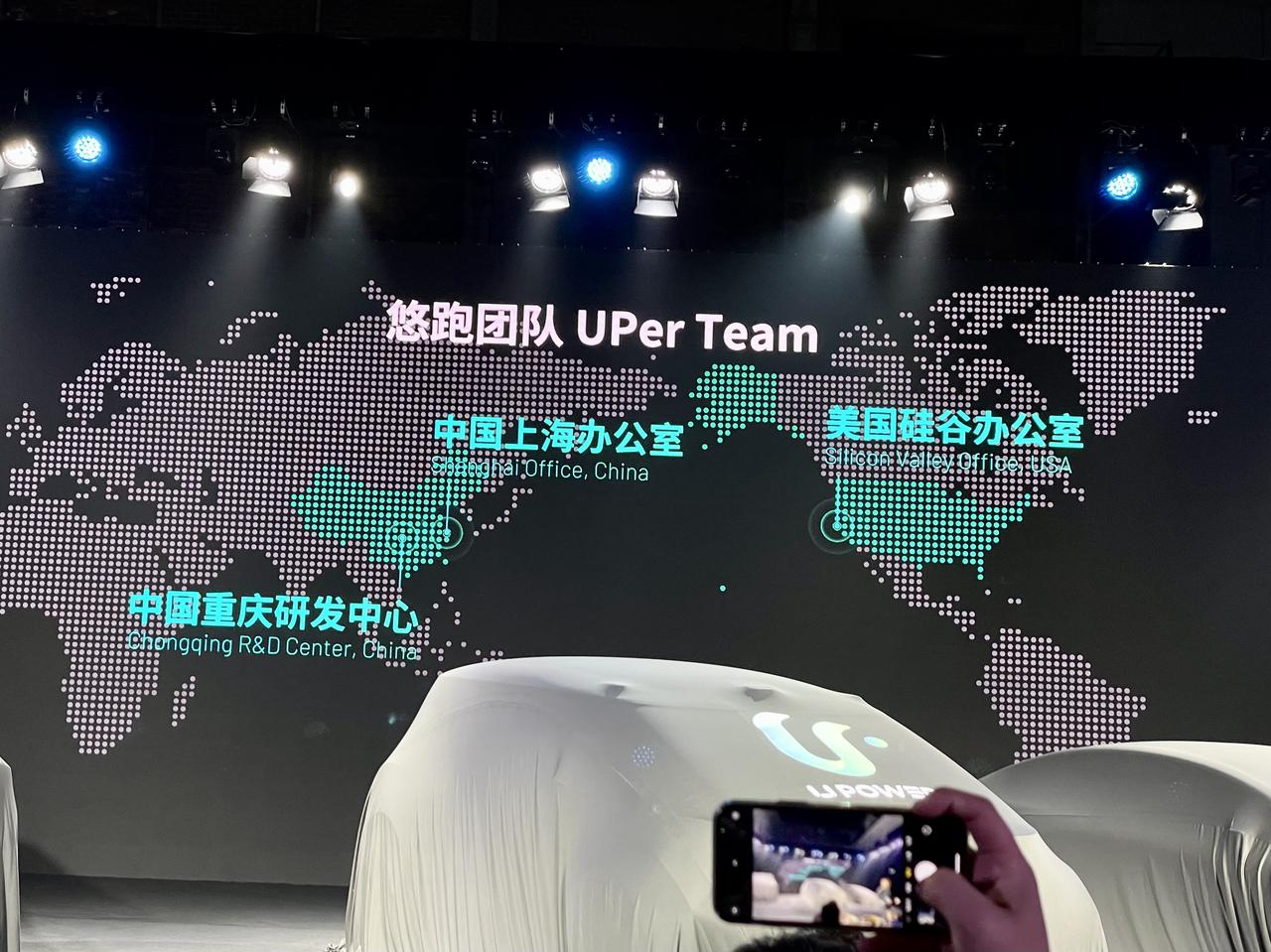
YouPai was established in April 2021 and has now received Pre-A+ round of financing with a valuation of RMB 1.5 billion. As of January, the number of employees has reached about 150, of whom 60% have 10 years of experience in the automotive industry, and half have worked in tech companies. Nearly half of the employees have a master’s or doctoral degree. Among them, the engineering team is close to 140 people, almost all of YouPai, with half responsible for software and half responsible for hardware.
At the beginning of my contact with YouPai, I actually wanted to figure out what YouPai does.
Li Peng introduced YouPai as “empowering scenarios to build cars based on skateboard platforms,” but this “empowering” vocabulary does not necessarily make people feel good.
In Li Peng’s vision of the future new energy market, there will be no “suppliers,” “new forces,” “mainstream manufacturers,” and other traditional definitions in the automotive industry. Instead, there will be “ecosystems,” “creators of user value,” and “rights of cabin space definition,” and other vocabulary. He pointed out that the difference between the supply chain and the ecosystem is that suppliers are unidirectional and do not provide feedback to upstream and downstream companies, while all participants in the ecosystem, including car companies and suppliers, can achieve bidirectional information feedback and communication with upstream and downstream enterprises.
Therefore, from a technological perspective, Li Peng stated that YouPai is a company with a product of “software and hardware integrated intelligent electric vehicle operating system.” But for the convenience of everyone’s understanding, I repeatedly communicated YouPai’s positioning and strategy, and finally, Li Peng recognized my term of “hardware Android.”# Android is a software system, and Chinese ICT companies such as Xiaomi, OPPO, and previous Huawei have built personalized and localized systems on top of native Android, which has attracted users and become a reason for purchasing. The same idea applies to YOUPAO, which provides highly integrated skateboard chassis and a unified software interface as a company, while the definition of cabin space is a matter for manufacturers to consider.
From YOUPAO’s perspective, although three concept cars and concept chassis were unveiled this time, they are just the products of two different combinations of chassis and cabin. Among them, YOUPAO has mastered more technologies related to skateboard chassis.
Let’s first take a look at the most important skateboard chassis
YOUPAO officially calls the “UP Super Chassis” an upgrade from a skateboard chassis. It has the ability to integrate traditional white body and further integrates components such as three electric systems, suspension, braking, steering, battery, electric drive system, and suspension.

YOUPAO staff demonstrated the tracking function on the concept chassis. Seeing a chassis walking on the ground by itself reminded me of the “Headless Knight” in DuckTales when I was a child. Looking at the engineer holding a handle to remote control, I suddenly realized that this is the ultimate driving mode, isn’t it? To control real vehicles online and in the cloud, this has entered the concept of “metaverse”.
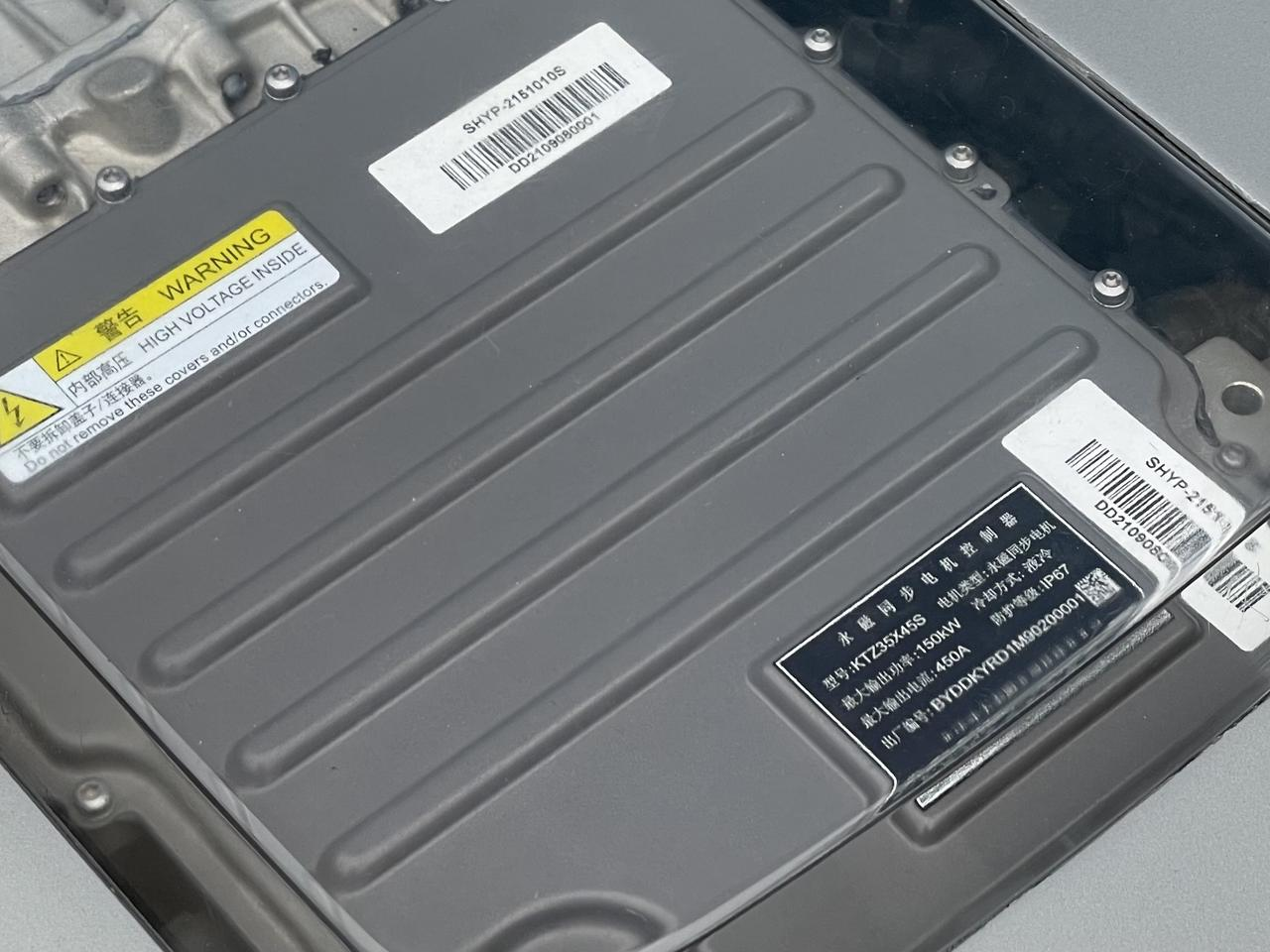
Returning to this prototype concept chassis, in addition to the 4G network receiver module and relatively complete suspension structure, I found something interesting on the rear motor. This is a 150 kW permanent magnet synchronous liquid-cooled motor that may come from BYD. It may be BYD’s first output of three electric products.
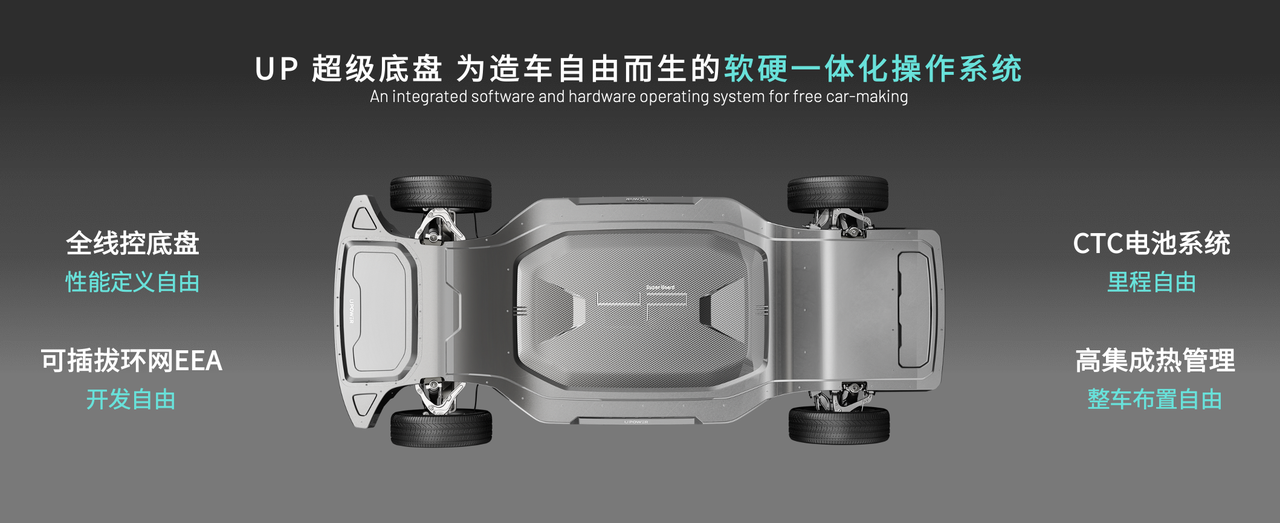
YOUPAO summarized four core technological advantages for its skateboard chassis: full line control, pluggable ring network electronic and electrical architecture, CTC battery system, and high-integration thermal management system.
- Full line control
We know that earlier news, Toyota’s bZ pure electric series pioneer bZ4X will start production in mid-2022. The most radical aspect of this car is the full-line controlled steering, which is of great significance to Toyota and the entire automotive industry.
YOUPAO will be the first to achieve “full” line control in 2023, which refers to line-controlled steering and line-controlled braking. Line control is very beneficial for assisted driving. With the elimination of mechanical hard connections, algorithms can be executed more efficiently, precision is improved, and delay is reduced.## Translation
Additionally, the “Custom” mode enables full-line control of braking and steering, which allows for the most personalized driving experience. Manufacturers can package the braking and steering data of supercars in OTA updates so that anyone can drive closer to a supercar than the current Sport and Economy mode switching can provide. However, the most interesting thing is that because the steering and braking sensations can be precisely adjusted, we can truly obtain a driving style that is most personalized.
- EEA Pluggable Looping Network
The main technology of YouPao is integrated into the chassis, and the cabin is left for B-side manufacturers to work with. Therefore, in the VIU (Vehicle Interface Unit) area, YouPao standardized the hardware interface to achieve unified underlying software, so that B-side customers can define based on this, similar to Android.
Concerning the developing trend of “pluggable” hardware, YouPao claims that on the HPVC chip, they support heterogeneous large computing platforms, and the highest computing power of the HPVC can be expanded to 1,000 TOPS or above, which can meet L4 and above autonomous driving requirements in the future.
- CTC battery system
Regarding CTC (Cell to Chassis) technology, this is also a manifestation of integrated thinking. Simply put, the battery becomes a structural component integrated into the chassis, receiving forces from all directions of the vehicle. Because the support structure between battery modules has disappeared, the volumetric energy density of the battery has been increased without affecting the chemical formula. Nonetheless, this poses a considerable challenge for the design of the battery’s cooling and exhaust structures.
YouPao’s engineers say that in the first-generation sliding chassis of YouPao, the battery pack supports CTC and CTP technology solutions, compatible with mainstream lithium-ion battery types such as lithium iron phosphate and ternary lithium, with a maximum range of up to 1,000 km. In the future, semi-solid-state batteries and solid-state batteries will also be supported.
- High integration thermal management system
YouPao officials claim that under the integrated energy management, winter heating energy consumption can be reduced by 70\%. The specific technical details are not very in-depth, but it is speculated that a heat pump air conditioner is used to connect the battery and cabin temperature control management. However, I need to understand more about the specifics and technical details.
Cabin design
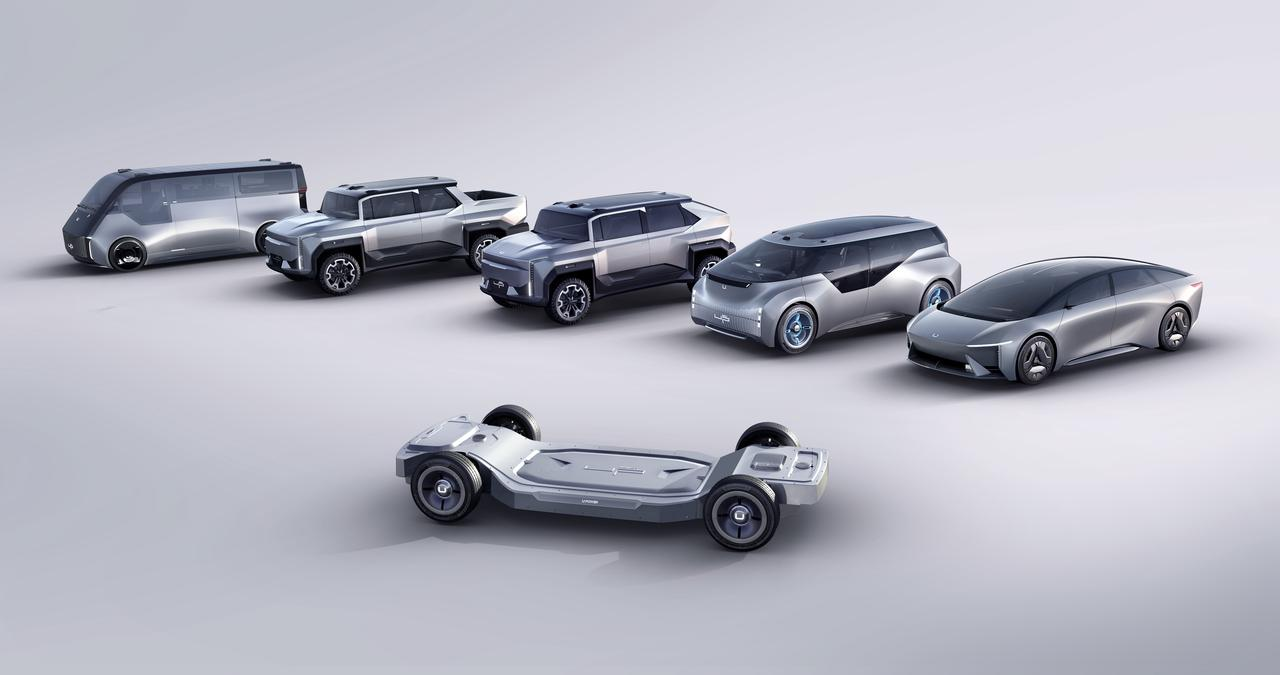 # YOUPAO Concepts Showcased 5 Cars at B-end Clients’ Event
# YOUPAO Concepts Showcased 5 Cars at B-end Clients’ Event
YOUPAO has standardized hardware in five areas, including chassis, powertrain, thermal management, passive safety, and electrical architecture, to meet the on-board needs of different scenarios. At this event, YOUPAO also revealed five concept cars with different functional forms to showcase to B-end clients.
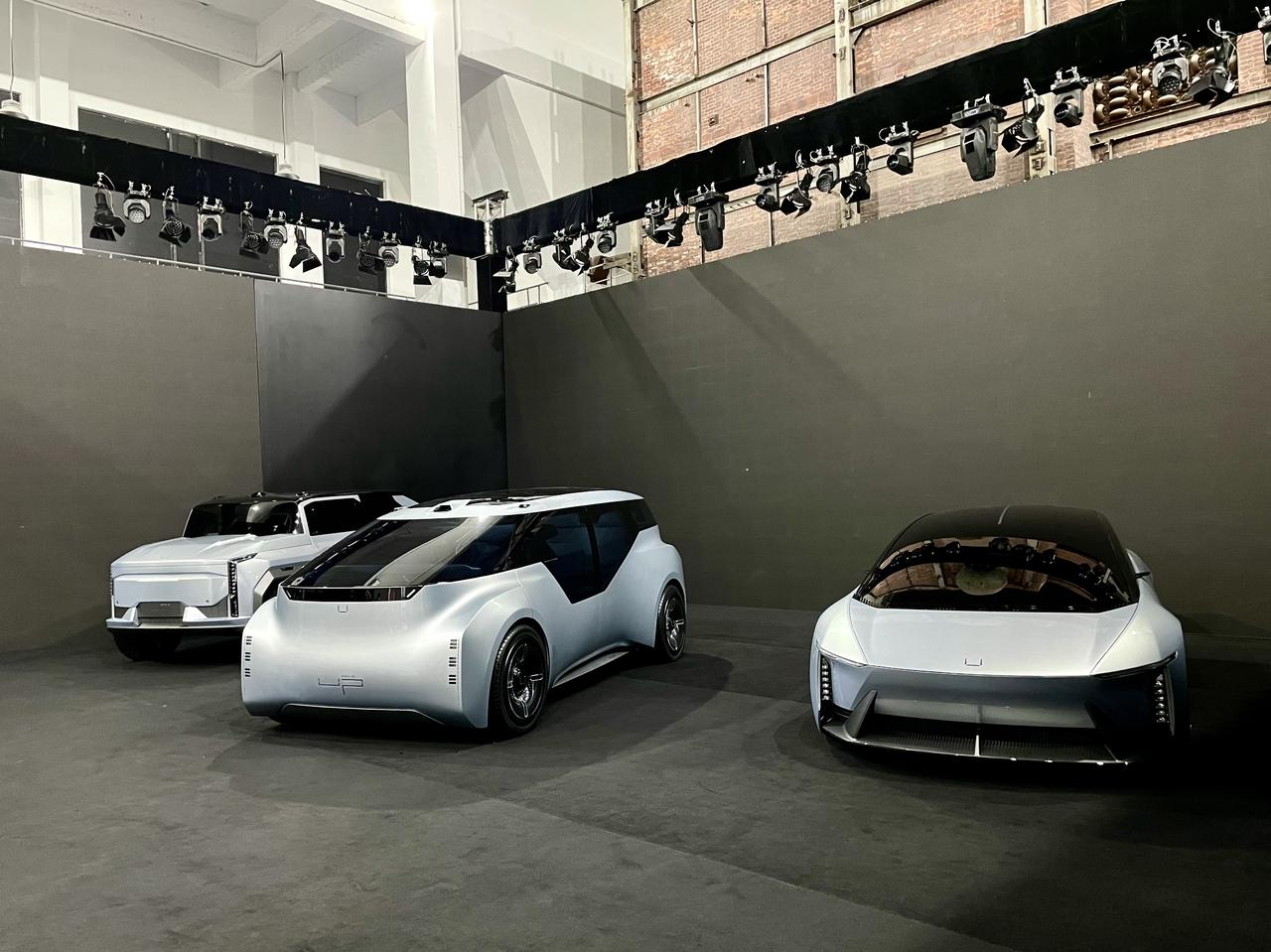
YOUPAO presented three of these concept cars at the event, and here’s how they planned the design for B-end manufacturers.
- UP SPACE 01 Super Sports Car
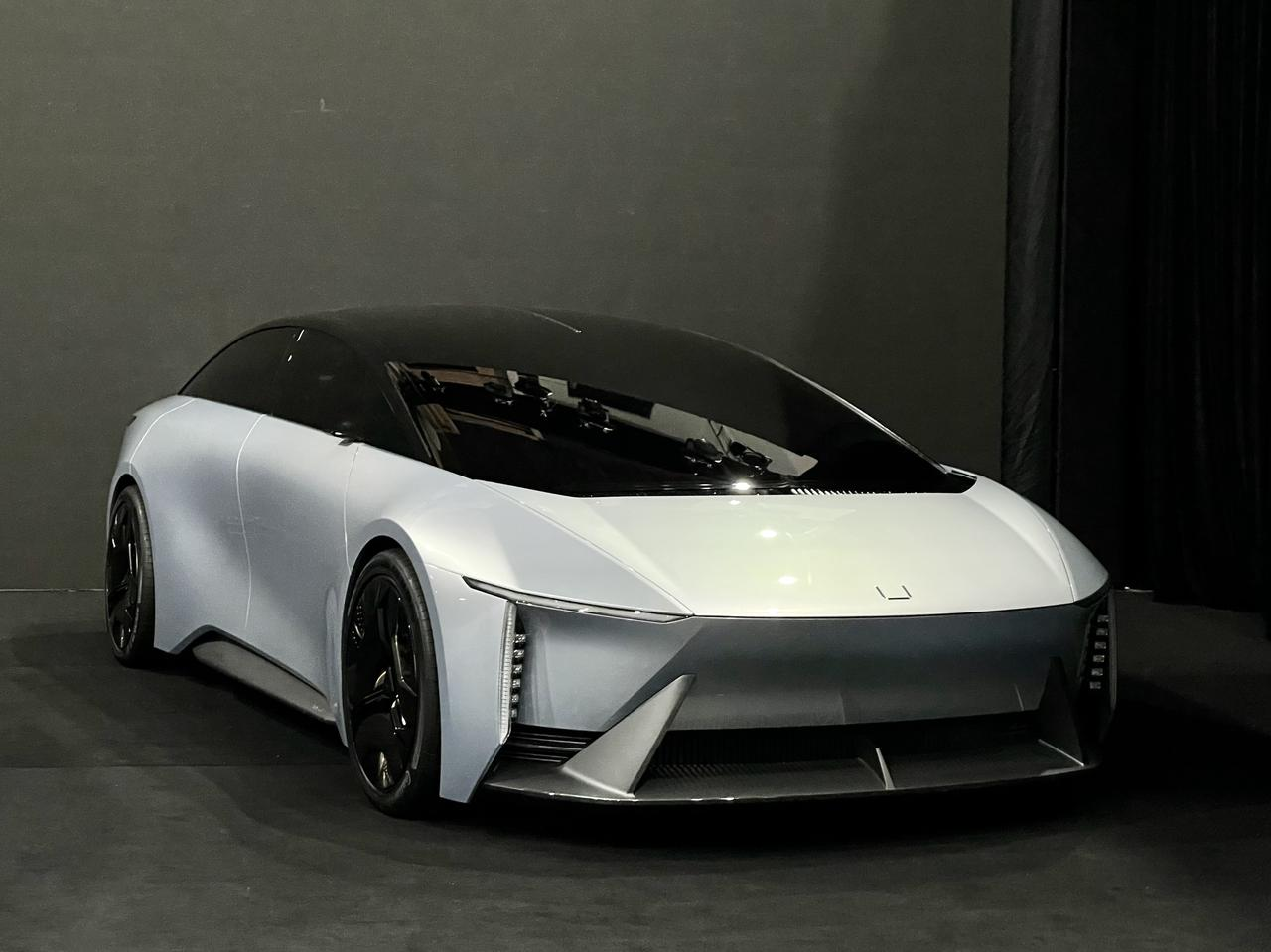
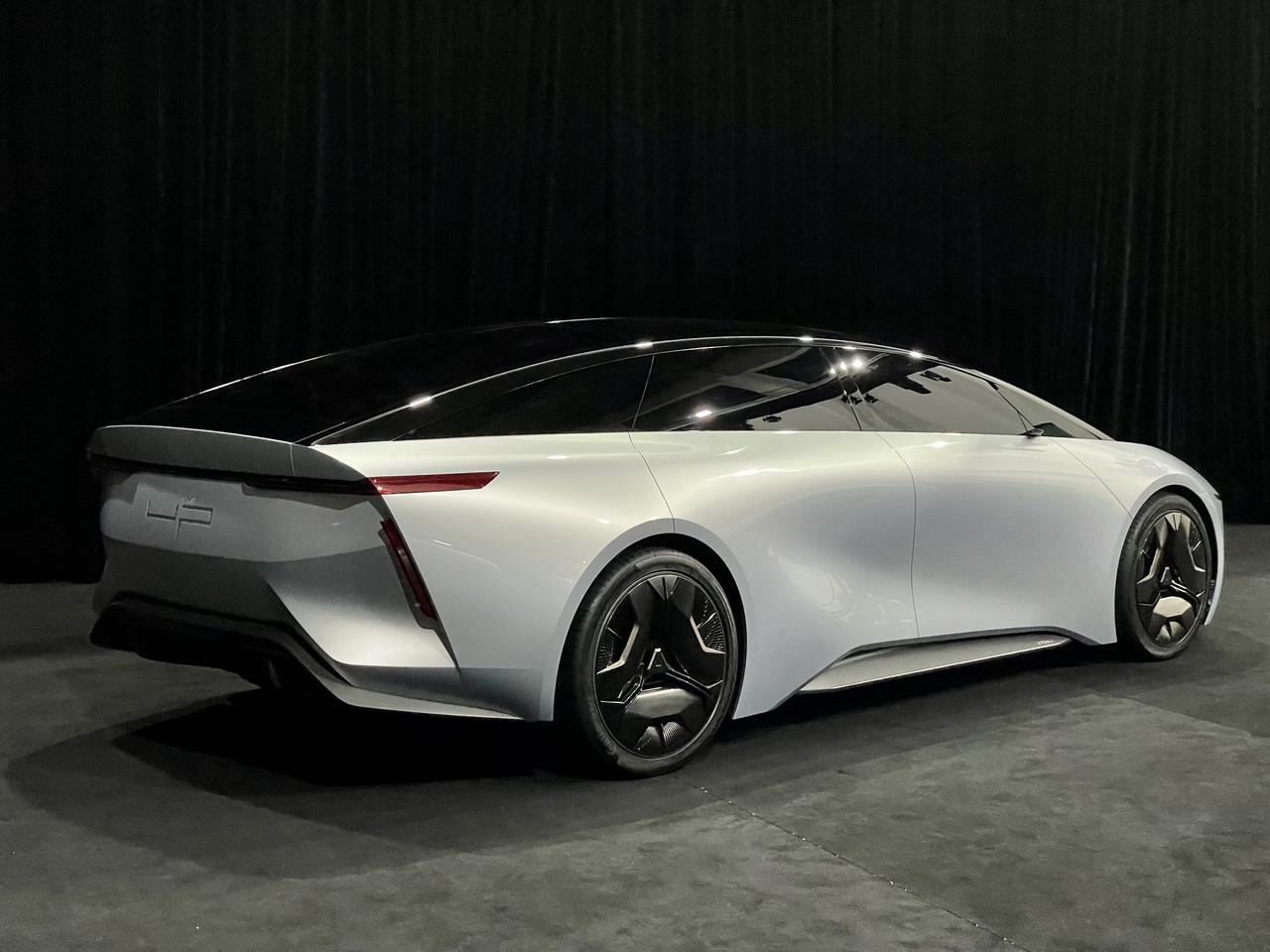
This is a sports car product. You can see a continuous curved surface from the front of the car to the rear, including the tail design that improves aerodynamic performance – it was referred to as the “replacement of Mercedes EQXX concept car” by the staff on-site.
- UP SPACE 02 Super MPV
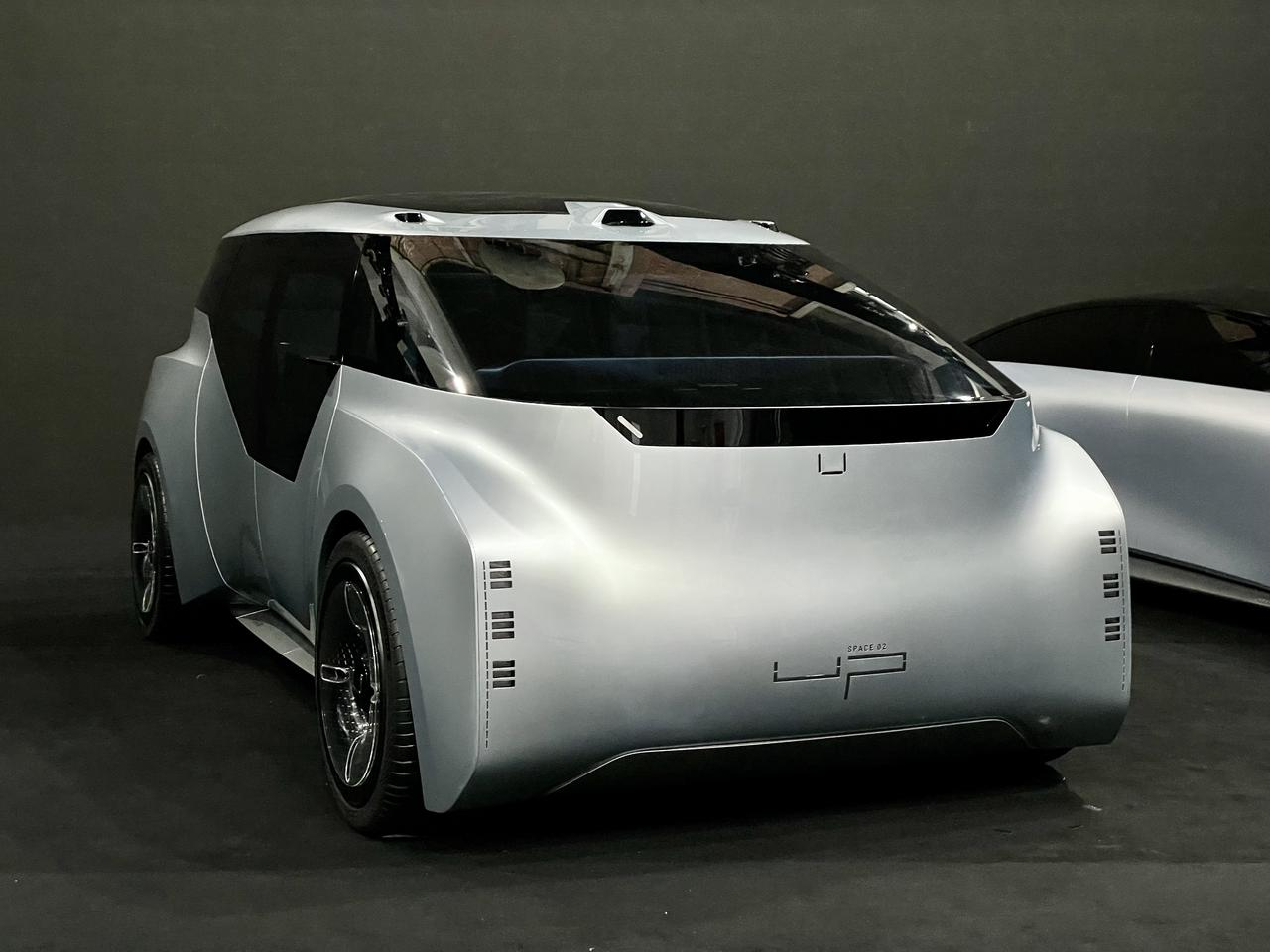
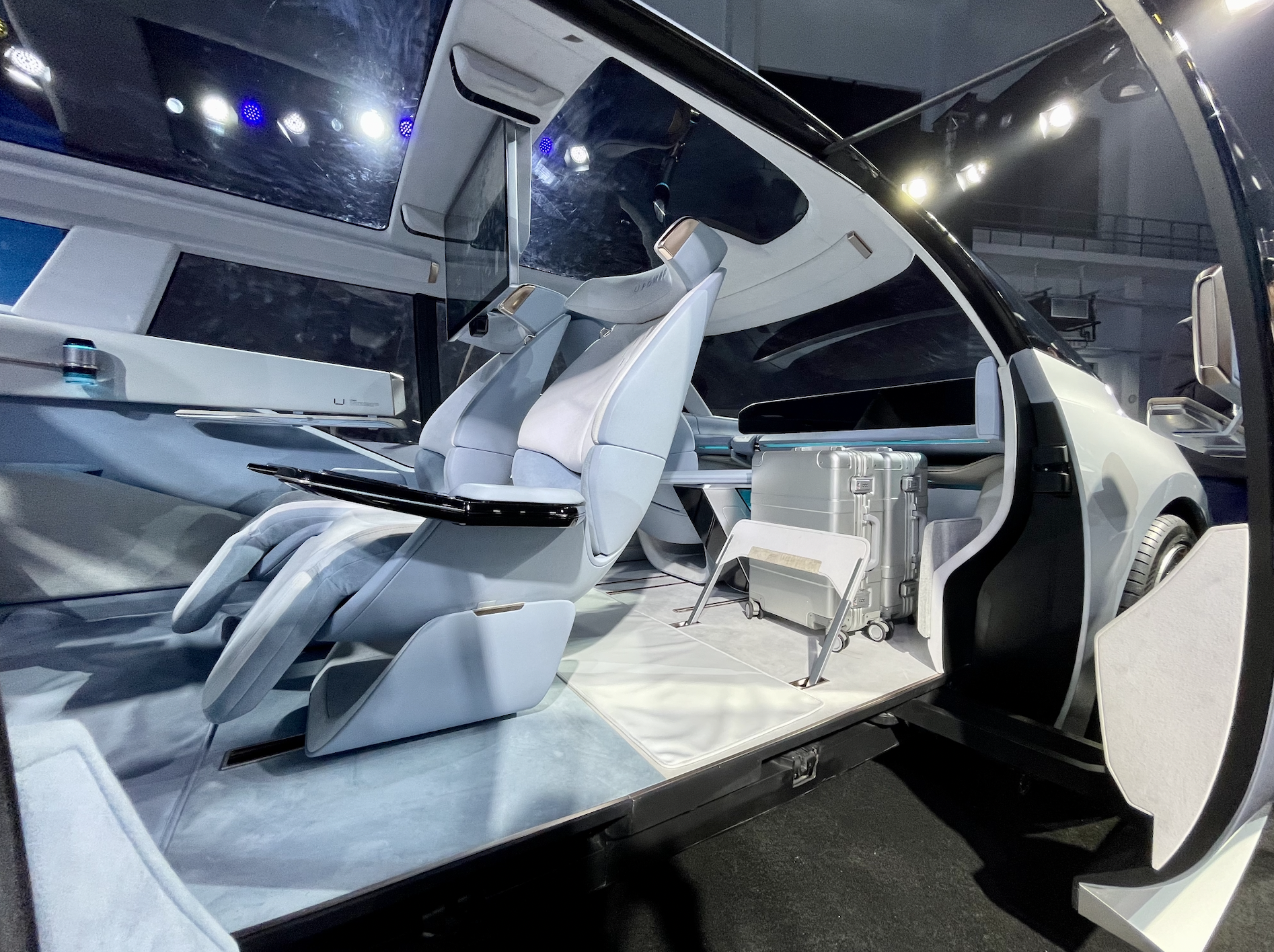
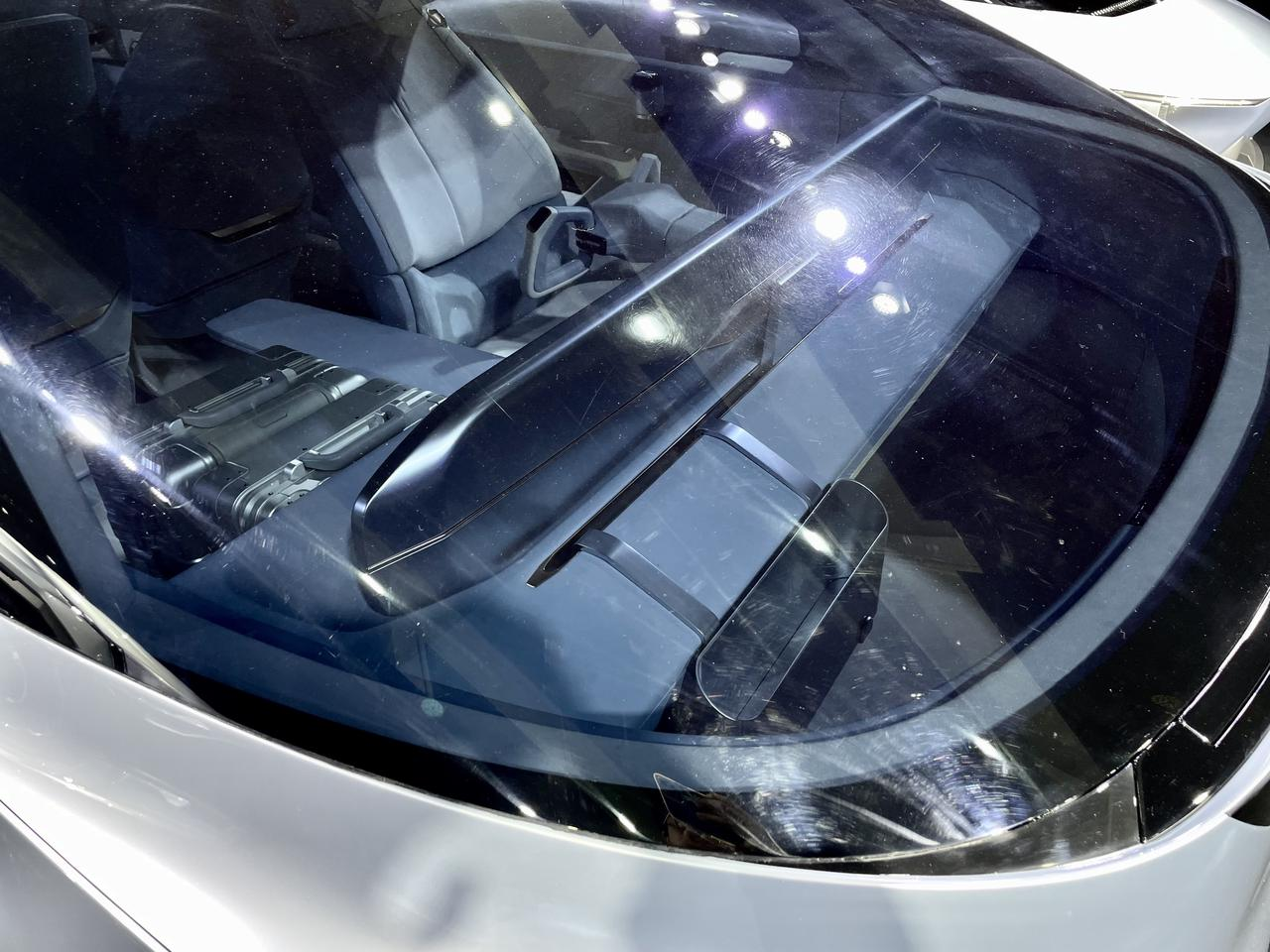
This is the only model of the three that allows the doors to be opened and the interior to be seen. It is positioned as a “multifunctional urban mobile space.” The entire vehicle has no B-pillar, and the A and C pillars are close to the edge of the vehicle, achieving three rows of arrangements at a length approaching that of a golf car. The passenger seat has been removed and a luggage rack module has been installed. The second-row seats can also be flipped over to form a meeting mode.
- UP SPACE 03 Super SUV

Adopting the popular “mecha” style, the traditional firewall in the conventional sense no longer exists. That long front compartment is designed to “create shapes”, and it is actually an electric kitchen tool similar to an “off-road module”.Except for the chassis and body, the connection between them is also a technical difficulty. Unlike the traditional non-load-bearing body connected by rubber between the upper and lower bodies, the UP super chassis and upper body are connected by rigid connection to achieve the effect of “joint force and joint bearing”. The specific technical details have not been disclosed, but currently, UP has applied for 46 patents in this field.
Who are U-P running’s customers?
Taking the sentence mentioned by Li Peng at the beginning, “body separation, joint force combination” as a starting point, we can expand to discuss UP’s core business model, which is based on the skateboard chassis and relies on integrating relevant technologies to leave the design of the car body and user experience to the manufacturer, which is what Li Peng calls “the right to define the cabin space”.
In Li Peng’s opinion, the current development of pure electric vehicle models still strictly follows the development process of the entire vehicle, from product definition, styling design, combination verification, trial production verification, and then large-scale production. According to this serialized development logic, during the era of fuel vehicles, the development cycle of a vehicle would reach 3-5 years. However, under the intense competition among new forces in the market and the considerable development of the platform concept, this time can now be reduced to around 30 months.
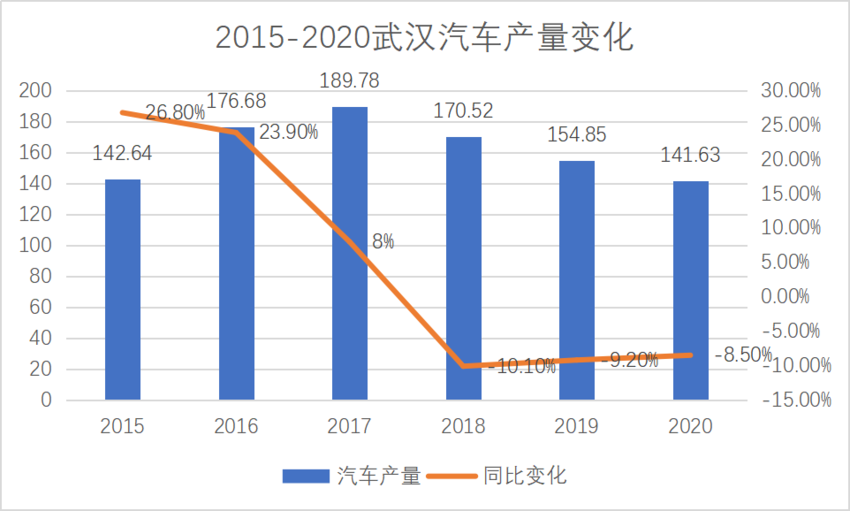
UP showed B-side manufacturers the effectiveness of its “UP Super Chassis”, where the development work becomes parallel and distributed in the case of the separation between the chassis and body. The tooling adjustment and process verification time can be compressed. During the production cycle of a new vehicle model on a traditional platform, the time can be shortened by 6-12 months. This has already demonstrated significant effects for U-P running, as they developed their first-generation product in 9 months.
This raises an interesting question, is U-P running building their factories or outsourcing to other manufacturers? Is it outputting chassis or can it also help with production? The answer is the latter. The outsourcing is controlled by Wuliangye holding’s Kaiyi, and the output is based on the demand of B-side customers, which U-P running will adapt to.
However, we need to look at this “traditional same-platform new vehicle model”, which implies that U-P running’s customers are those new entrants who do not have a platform product. This means, “Since you don’t have a platform (or money to develop one and your time is tight), use mine instead.”
Does this mean that U-P running has little temptation for well-established new forces with mature platforms or traditional OEM giants? Due to their strong supply chain management, the platform has become their core strategy. Although there are complex personnel struggles within mature systems, with the support of the mature platform and supply chain, the process of launching products is not necessarily long, and there is relatively abundant funds to develop pure electric platforms or exclusive skateboard chassis.
 # Li Peng Joked, Comparing Youpao’s Clients to Rivian’s Amazon and Ford
# Li Peng Joked, Comparing Youpao’s Clients to Rivian’s Amazon and Ford
Li Peng joked that Youpao’s clients are similar to Rivian’s Amazon and Ford, and that Youpao now has its own “Amazon” and “Ford”. However, due to confidentiality agreements, we do not know the specific customer list that Youpao has. But Li Peng may not know that although Ford has invested in Rivian and provided white bodies as R&D support, Ford has now canceled its cooperation with Rivian to develop Lincoln models and is in a “peaceful breakup” state. This makes me even more curious about who Youpao’s “Ford” is.
I guess “Ford” is Changan, and I cannot tell you who “Amazon” is, but it is an ICT manufacturer. You can freely guess in the comment section, and then we can reveal the answer.
Youpao? Huawei? It’s Hard to Tell
As the article goes deeper, I, like you, have a deep question: does Youpao really plan to make cars, with its mastery of skateboard chassis technology, underlying software platform, and even a well-conceived concept car?
This question was first asked about Huawei. Huawei has a strong channel, a huge fan base, years of precipitation in the ICT field, and we have actually experienced its amazing assisted driving ability. This is only one step away from making cars.
Now this question has fallen on Youpao. Li Peng’s answer is “We currently won’t enter the business of building consumer brands.”
I was very curious about this question and asked Li Peng. His answer was very interesting. He said that creating value for users in consumer brands and providing services throughout their lifecycle requires a lot of money.
